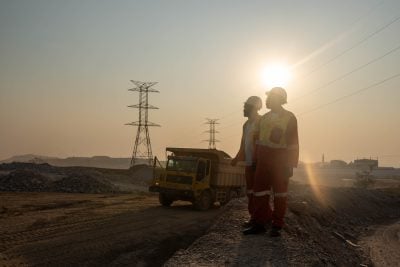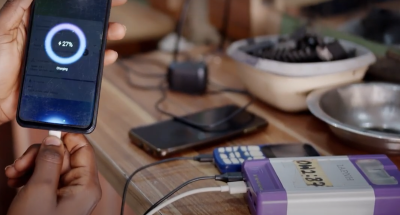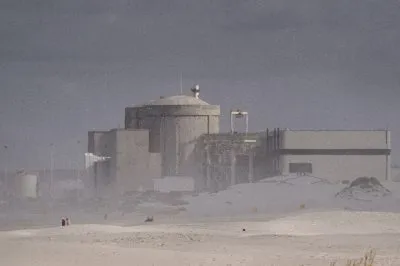Nothing infuriates Kenya’s landlocked neighbours as much as the delays and inefficiencies, leading to additional costs, at the principal gateway into the sub-region – Mombasa Port. The capacity of the port has been exceeded many times over and expansion plans are moving at snail’s pace. Something has to give.
Sadly, as experience now reveals, Kenya’s landlocked neighbours have to factor additional costs into their budgets and put up with a heavily congested Mombasa Port, run by the Kenya Ports Authority (KPA) and frequent breakdowns of the Simba (lion) system of cargo clearance run by the Kenya Revenue Authority (KRA). To make matters worse, 2012 began rather badly for this port as cargo, which had piled up during the Christmas festivities, was adding to the general chaos.
Even though Mombasa Port is the main service point and anchor of the Northern Transport Corridor, it is facing myriad challenges ranging from traffic imbalance, congestion, accessibility, capacity and container freight terminals. Incidentally, imports far outnumber exports at the port, signifying trade imbalance between all the East African countries and their international trading partners.
Mombasa Port’s facilities are overstretched and under intense pressure. The port, which was originally designed to handle 250,000 twenty-foot equivalent units (TEUs), today handles more than 700,000 TEUs. And that is not all.
From the time a ship docks at Mombasa, the long wait begins. First, it takes 10 to 14 days for a ship to be allocated a berth at the port, forcing shippers to pay between $10,000 and $12,000 per day as demurrage fees. After securing a berth, it takes some seven days for a container to be discharged from the ship and another 18 days for the container to find its way to the Container Freight Services (CFS) depot. To transport the cargo to Nairobi takes two days.
Factoring all these and adding non-tariff barriers, it takes exactly 44 days for the goods to reach Kampala in Uganda and 46 days for the cargo to be delivered to Kigali in Rwanda. Eighteen months ago, it would take half the time. The efficiency at Mombasa fares badly when compared with Durban and even Lagos.
“The demurrage charges are having a significant net impact on the economy. That’s thousands of dollars worth in foreign exchange that we are losing every day,” Patrick Obath, Chairman of the Kenya Private Sector Alliance (KEPSA), says.
Recently, Ugandan traders decided to revive the Uganda National Trade and Facilitation Forum and form a shippers’ council to lobby for the reduction of prohibitive transportation costs emanating from the Northern Corridor. This came about as a ripple effect; delays at Mombasa Port increase their costs and these are passed on to the final customer, resulting in lower sales and profits.
To ship a 40-foot container from Dubai to Mombasa costs between $1,400 and $1,700. Clearing the same container and transporting it to Uganda costs $3,800. The costs are even higher for hinterland nations such as Rwanda, Burundi, DR Congo and South Sudan.
During an interview late last year, Ian Alsworth-Elvey, South Sudan Breweries Managing Director, lamented: “The cost of doing business in South Sudan is significantly higher than in other places and part of that is the fact that we have exceptionally higher transport costs from Mombasa port in Kenya.”
Alsworth-Elvey added, “To bring a container from Europe to Mombasa by ship costs about $2,000. It then costs you close to $8,000 to move it from Mombasa to Juba.”
The multiplier effects caused by these delays have seen industrialists and traders in the region paying costly prices for importation of raw materials and the overall competitiveness compromised due to delays and expenses incurred which are ultimately passed on to consumers.
Heated discussions
For the last five years, the neighbouring countries have expressed their displeasure with the KPA-run Mombasa Port but to no avail. Late last year, Ugandan President Yoweri Museveni, frustrated by the port’s costly delays to his economy, signed a pact with his Tanzanian counterpart President Jakaya Kikwete to open up a southern route for his country’s exports and imports through Dar es Salaam.
“During Christmas holidays many importers did not collect their cargo, causing a pile-up of ships as well,” Gichiri Ndua, Managing Director of KPA, says, absolving KPA from blame. For keen watchers of the port, this has been the theme for close to a decade now and showing no signs of respite.
A public outcry against congestion at Mombasa Port for the better part of January saw the Kenyan government initiating a 100-day Rapid Results Initiative to speed up cargo clearance and prevent accumulation of charges necessitated by delays from being passed on to importers and consumers.
Ali Saidi, a long-distance truck driver with Bash Hauliers, sympathises with all businesses using Mombasa Port. “Something urgent needs to be done to modernise the Port,” Saidi says. “The delays at the port are giving our port a bad name and it is something that can be fixed.”
In 2009, CPCS Transcom of the Netherlands conducted a survey of the port’s efficiency capabilities and gave future scenarios on the port. Their main recommendations, released in 2010, recommended that key cargo handling services be transferred to private players and the building of a new container terminal under the BOT (build, operate, transfer) concession.
In June 2010, the World Bank followed this up and released their report, which warned: “The port of Mombasa has exceeded its design capacity yet it is expected to handle growing imports and exports. It is already operating at maximum capacity for both containerised and general cargo and will suffer progressive declines in operational effectiveness unless both capacity and efficiency issues are urgently addressed.”
The World Bank report warned: “The Mombasa port is facing, in the immediate term, very serious capacity problems. Short-term immediate impact will be an increase in vessel delays, port congestion surcharges, and slower throughput of the port causing significant cargo delays and higher costs to importers.”
Just as the World Bank warned, it has come to pass. Apparently, two years before these reports were released, the Kenyan Transport Ministry, which oversees the port’s daily operations through the KPA, had initiated a process of privatising Mombasa port and reining in inefficiency while pre-empting the dangers posed by port congestion.
Both the CPCS Transcom report and the World Bank’s report only helped in buttressing the government’s desire to salvage the port. The government’s plans spilled over to 2011 and political brinkmanship led by coastal politicians opposed the plans, effectively killing off privatisation prospects.
During all of 2011, the port’s future plans were at the centre of heated discussions pitting the government, business community and bilateral partners on the one hand against the coastal politicians and dock workers on the other. Incidentally, the coastal politicians were not entirely opposed to privatisation, what angered them was the non-consultative approach adopted by the government.
“We are not against the process, but we need transparency in the way the process is conducted,” the Member of Parliament for Wundanyi, a constituency at the coast, Thomas Mwadeghu, said last year.
On their part, the Dock Workers Union (DWU) presented a memorandum to the Minister for Transport, Amos Kimunya, requesting that Kenya adopt the Singaporean or Durban ports model in which, though commercialised and autonomous, they remain public service ports.
The privatisation plans were effectively shelved as no consensus was arrived at and, as such, KPA has to make do with slow piecemeal changes.
“We have been building our capacity to handle increased volumes of cargo but we are let down by poor infrastructure. The roads and the railways are not effectively handling the cargo coming out of the port,” KPA’s Ndua says.
In its defence, KPA reveals that it has been constructing berth 19 at a cost of $41.2m and carrying out $52.5m worth of development works on berths 1-10. Last year, KPA bought three new cranes at $24m and is expecting eight reach stackers. In addition, the construction of a new $250m container terminal and the conversion of berths 11-14 to container berths at a cost of $62.5m are also under way.
Other features envisaged in making Mombasa Port efficient include the construction of a Free Port at Dongo Kundu, relocation of the Kipevu Oil Terminal, construction of a new CFS at Mariakani and Dongo Kundu Bypass.
Want to continue reading? Subscribe today.
You've read all your free articles for this month! Subscribe now to enjoy full access to our content.
Digital Monthly
£8.00 / month
Receive full unlimited access to our articles, opinions, podcasts and more.
Digital Yearly
£70.00 / year
Our best value offer - save £26 and gain access to all of our digital content for an entire year!
 Sign in with Google
Sign in with Google 


